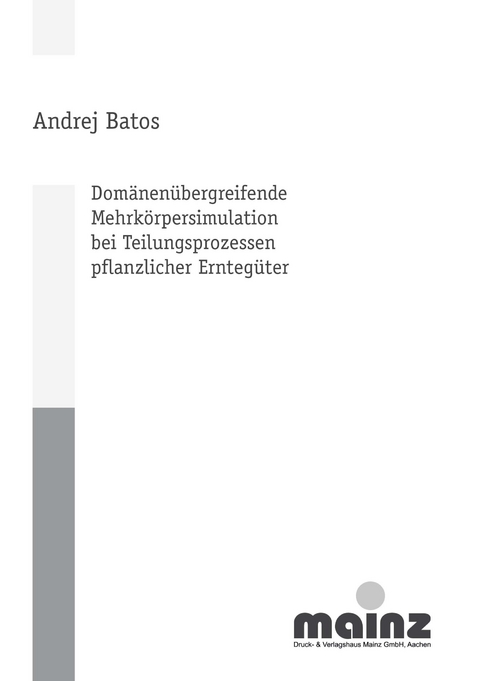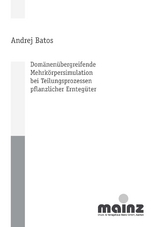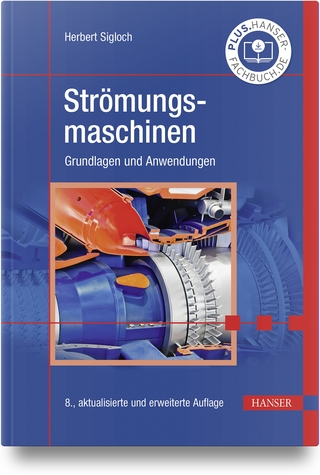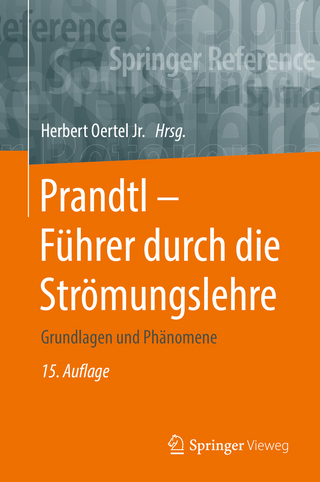Domänenübergreifende Mehrkörpersimulation bei Teilungsprozessen pflanzlicher Erntegüter
Seiten
- Keine Verlagsinformationen verfügbar
- Artikel merken
Der Einsatz der Simulationstechnik gewinnt im Bereich der Landtechnik rasant an Bedeutung.
Dennoch ist er auch heute oft auf die aus der Automobilindustrie bekannten Anwendungen
beschränkt. Die Auslegung von Erntemaschinen hinsichtlich der Ernteprozesse basiert somit
zu einem großen Teil auf Erfahrungswerten und Messungen. Als Hauptgrund hierfür sind neben
dem Aufwand für die Hard- und Software sowie die Schulung von Mitarbeitern die zahlreichen,
in Simulationen äußerst schwierig zu berücksichtigenden Pflanzeneigenschaften zu
sehen. Letztere hängen von vielen Faktoren ab, zu denen auch die Umwelteinflüsse zählen,
denen die Pflanze ausgesetzt ist. Messwerte, die bestimmte Pflanzeneigenschaften wiedergeben,
weisen zumeist starke Streuungen auf und sind nicht zeitlich konstant. Messungen können
somit nur in einem engen Zeitraum wiederholt werden. In der Simulation ist es möglich
mit Mittelwerten zu arbeiten oder die Parameter im Simulationsmodell automatisch in einem
bestimmten Bereich, der z. B. der Normalverteilung entspricht, zu variieren.
This thesis describes the implementation and testing of a coupling method for the cross-domain simulation of multi-body separation processes. In the present case, a multi-body simulation software and a computational fluid dynamics software are coupled. The simulation model should be used in future research projects to generate fundamental knowledge about high-dynamic cutting processes, e. g. in agricultural machinery. In the long-term, it can contribute to increase the process understanding.
At first, the state of the art is summarized and the simulation methods used are described. Particularly, this includes a description of the methods used for the contact detection and treatment. Afterwards, a multi-body simulation model of a grain stalk is created and validated in various experiments. Based on this model, an agricultural cutting process caused by a translational moving blade is simulated. The parameterization of the simulation model is based on experiments carried out with the high-speed cutting unit which is also described in this thesis. The geometry and the technical behavior of most bodies can be approximated with models consisting of circles or cylinders in the two-dimensional space and spheres in the three-dimensional
space. This also simplifies the contact detection and treatment. Since the model of the
grain stalk used here consists of straight chained spheres, the flow behavior of cylinders and spheres is investigated before coupling the simulation domains. After these investigations, the coupling method and its implementation are presented. In the
computational simulation dynamics software, the bodies can be modeled as gaps in the mesh or as immersed solids. The validation is based on numerous examples. Finally, two multibody separation processes are exemplarily simulated. The examinations show that the coupling method is suitable for the intended purpose and that it delivers good results. The quality of the results primarily depends on the quality of the computational fluid dynamics simulation. The computational fluid dynamics simulation generally requires fine meshes, whose quality decreases due to the movements of the bodies, making remeshings necessary. Both increase the computational duration, particularly of transient simulations. Using immersed solids makes remeshing unnecessary, but the impossibility of resolving boundary layers leads to an inexact calculation of body forces. Further developments of this method in conjunction with increasing computer performance will also enable the coupled simulation of complex systems in the future.
Dennoch ist er auch heute oft auf die aus der Automobilindustrie bekannten Anwendungen
beschränkt. Die Auslegung von Erntemaschinen hinsichtlich der Ernteprozesse basiert somit
zu einem großen Teil auf Erfahrungswerten und Messungen. Als Hauptgrund hierfür sind neben
dem Aufwand für die Hard- und Software sowie die Schulung von Mitarbeitern die zahlreichen,
in Simulationen äußerst schwierig zu berücksichtigenden Pflanzeneigenschaften zu
sehen. Letztere hängen von vielen Faktoren ab, zu denen auch die Umwelteinflüsse zählen,
denen die Pflanze ausgesetzt ist. Messwerte, die bestimmte Pflanzeneigenschaften wiedergeben,
weisen zumeist starke Streuungen auf und sind nicht zeitlich konstant. Messungen können
somit nur in einem engen Zeitraum wiederholt werden. In der Simulation ist es möglich
mit Mittelwerten zu arbeiten oder die Parameter im Simulationsmodell automatisch in einem
bestimmten Bereich, der z. B. der Normalverteilung entspricht, zu variieren.
This thesis describes the implementation and testing of a coupling method for the cross-domain simulation of multi-body separation processes. In the present case, a multi-body simulation software and a computational fluid dynamics software are coupled. The simulation model should be used in future research projects to generate fundamental knowledge about high-dynamic cutting processes, e. g. in agricultural machinery. In the long-term, it can contribute to increase the process understanding.
At first, the state of the art is summarized and the simulation methods used are described. Particularly, this includes a description of the methods used for the contact detection and treatment. Afterwards, a multi-body simulation model of a grain stalk is created and validated in various experiments. Based on this model, an agricultural cutting process caused by a translational moving blade is simulated. The parameterization of the simulation model is based on experiments carried out with the high-speed cutting unit which is also described in this thesis. The geometry and the technical behavior of most bodies can be approximated with models consisting of circles or cylinders in the two-dimensional space and spheres in the three-dimensional
space. This also simplifies the contact detection and treatment. Since the model of the
grain stalk used here consists of straight chained spheres, the flow behavior of cylinders and spheres is investigated before coupling the simulation domains. After these investigations, the coupling method and its implementation are presented. In the
computational simulation dynamics software, the bodies can be modeled as gaps in the mesh or as immersed solids. The validation is based on numerous examples. Finally, two multibody separation processes are exemplarily simulated. The examinations show that the coupling method is suitable for the intended purpose and that it delivers good results. The quality of the results primarily depends on the quality of the computational fluid dynamics simulation. The computational fluid dynamics simulation generally requires fine meshes, whose quality decreases due to the movements of the bodies, making remeshings necessary. Both increase the computational duration, particularly of transient simulations. Using immersed solids makes remeshing unnecessary, but the impossibility of resolving boundary layers leads to an inexact calculation of body forces. Further developments of this method in conjunction with increasing computer performance will also enable the coupled simulation of complex systems in the future.
| Erscheinungsdatum | 14.12.2016 |
|---|---|
| Verlagsort | Aachen |
| Sprache | deutsch |
| Maße | 148 x 210 mm |
| Gewicht | 246 g |
| Einbandart | Paperback |
| Themenwelt | Naturwissenschaften ► Physik / Astronomie ► Strömungsmechanik |
| Technik ► Maschinenbau | |
| Schlagworte | Erntegüter • landwirtschaftliche Güter • Mehrkörpersimulation • Schnittprozesse • Simulationsdämonen • Simulationsmethode |
| ISBN-10 | 3-95886-128-8 / 3958861288 |
| ISBN-13 | 978-3-95886-128-2 / 9783958861282 |
| Zustand | Neuware |
| Haben Sie eine Frage zum Produkt? |
Mehr entdecken
aus dem Bereich
aus dem Bereich




